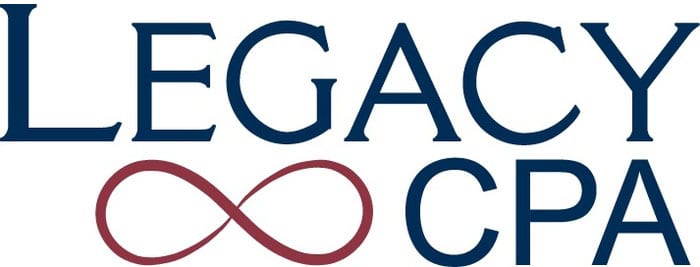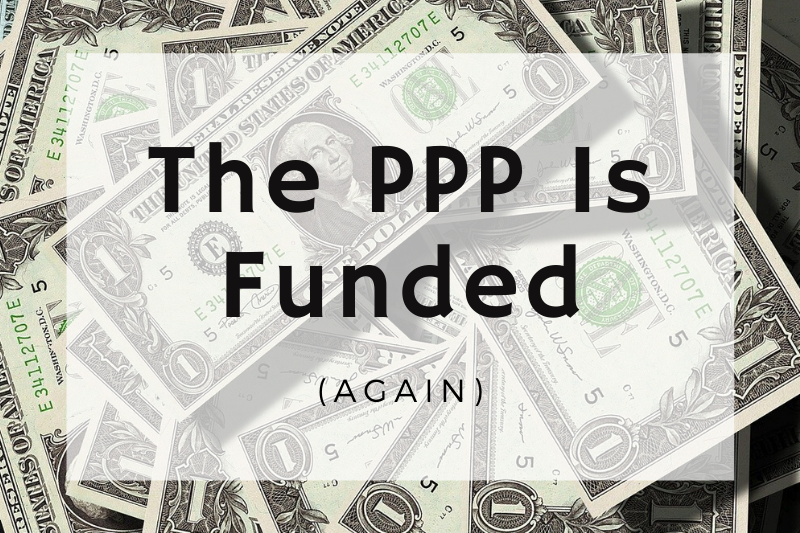The second round of the Paycheck Protection Program (PPP) funding, $322 billion, began this past Monday. The first round at $349 billion funded 1.6 million businesses in just 13 days, with some 800K pending applications in the queue.
If yours was one of those pending applications, there is a good chance you should receive funding. If you received an SBA certification number in round 1, you will receive funds. If you didn’t receive a certification but your application was accepted by your bank, contact your bank to make sure your application was sent to the SBA. If you haven’t applied yet, do it now.
Many lessons were learned from the last round. For one, funding dries up real quick.
In this round, the SBA is working to ensure that large banks don’t receive the lion’s share of funding. The SBA has set aside $60 billion for community banks and smaller banks to channel monies to smaller businesses. If you don’t have a relationship with a small bank, Kabbage, Lendio, PayPal and LendingClub are just some of the many other “non-bank” lenders out there. They had good turnaround (though they are now running into similar problems as the large banks did before).
We are here to help you through this stage, but how you manage what happens next will determine the future of your business.
Your business might be in any of a variety of places right now, but from what we are observing they are falling into these four categories.
1) You didn’t receive funding, and you don’t really need it. Your business has held steady and/or grown through these Covidian times because of your ability to work remotely, or you qualified as an essential business in your municipality.
If that’s you, then you should be building for SCALE. That means:
- Evaluate your hiring and training (now is a great time to find amazing talent)
- Plan for how to continue your growth when the economy recovers
- Build and plan for long-term sustainable growth
2) You didn’t receive funding, and you REALLY need it. You’ve been impacted in a serious way, and your business is struggling.
If that’s you, then you’d better have applied for the PPP and the Economic Injury Disaster Loan (EIDL), and working to make your banking partner’s life as EASY as possible. We’re here to help you with any questions, but you need to be doing these things as well:
- Find other sources of funding besides PPP (I’ll write more about that in a future note).
- Evaluate how long your business can sustain without funding, and make whatever changes and cost cuttings necessary to keep going if you do NOT receive funding.
3) You DID receive funding, and it’s a good thing … you might have gone under, had you not. You’ve been impacted, but your business is hanging in there, thanks to the SBA.
If this is you, then:
- PLAN that the crisis will NOT have run its course by the time your funding runs out, and use this time to build new streams of revenue for your business.
- Evaluate whether the funding will actually be enough — and if not, what can you do NOW to somehow recapture revenue in order to survive. This requires financial forecasting, and we would be happy to help you in these efforts.
- Cut costs as you can (though you must keep your payroll at or above 75% of what it was before February 15, 2020).
- Ensure that you receive forgiveness of your funding by using it in a compliant manner.
- Evaluate the Key Performance Indicators (KPI) of your business to know whether you have a long-term sustainable venture when funding runs out. And if so …
- Find additional sources of funding as needed (more about that soon).
4) You received funding, but it feels more like a “bonus” than a necessity. You jumped on the PPP, but your business hasn’t taken the hit that it might have, and the funding feels extraneous. So, again I say to you:
Disbursement compliance is essential. Don’t go crazy spending this money. Do it right.
- The funds MUST be spent in the 8 weeks following the disbursement date.
- The funds cannot be spent on anything BESIDES:
- Payroll (capped at $100,000 on an annualized basis for each employee)
- Group healthcare premiums (employer portion only)
- Rent/Mortgage (for the business only)
- Utilities
- You cannot juice these numbers by giving yourself or your employees a “bonus”. YES, you can bonus your people, but the numbers that COUNT for PPP forgiveness are the annualized figures, not *just* what is spent within these next 8 weeks.
- You must keep 75%+ of your payroll figure intact (remember, this is called the “Payroll Protection Plan” for a reason).
If you are doing well, it might be time for some dreaming. Let’s make a tax-advantaged plan for coming out of this season stronger than ever. And we’re here to help with that too.
If you have any question, give us a call.
Warmly,
The Team at Legacy CPA
(541) 326-0993
We are grateful for our chance to serve you and your business — and we are dedicated to its success, in every season.
Feel free to forward this article to a business associate or client you know who could benefit from our assistance. While these particular articles usually relate to business strategy, as you know, we specialize in tax preparation and planning for families and business owners.

